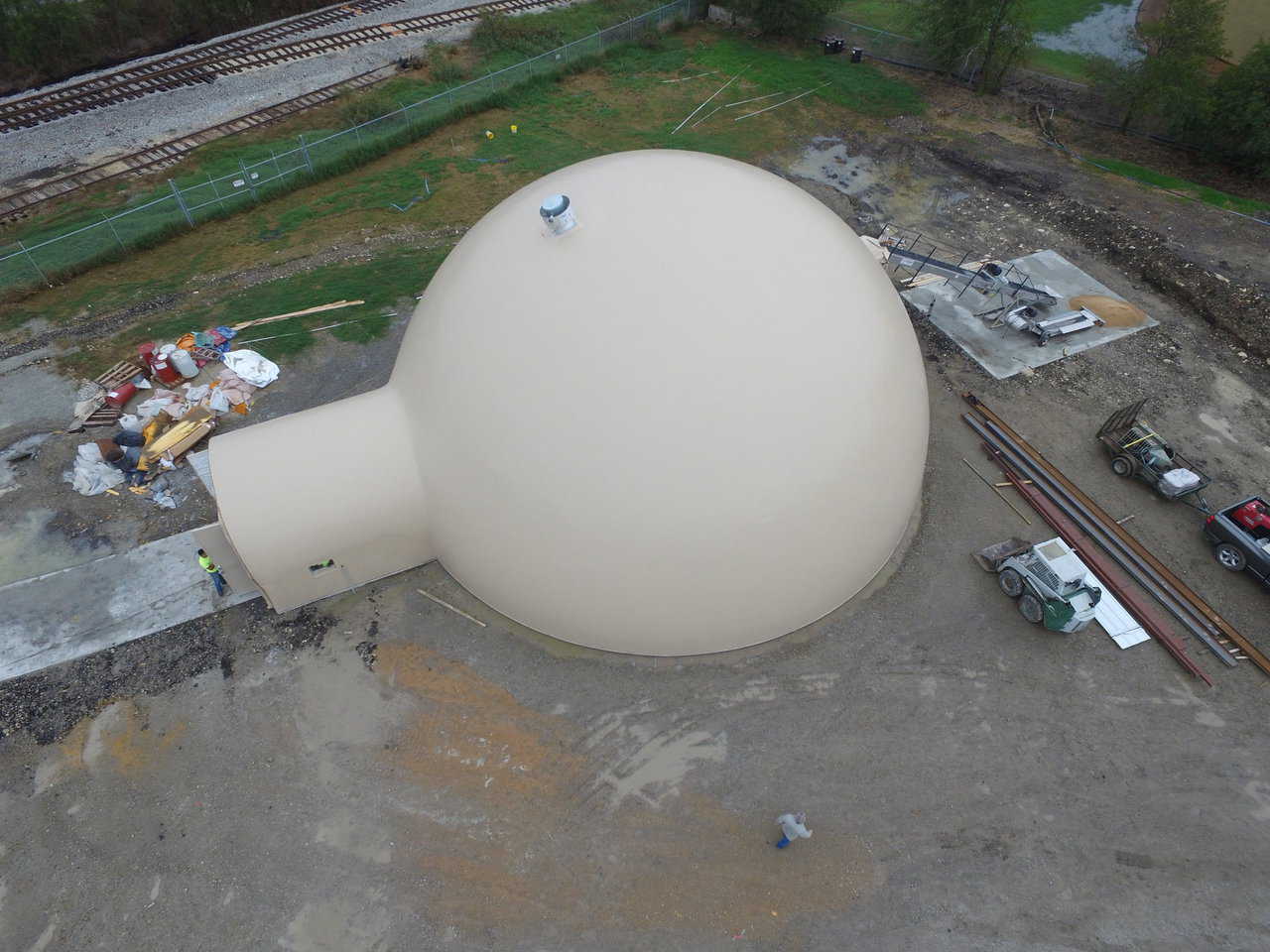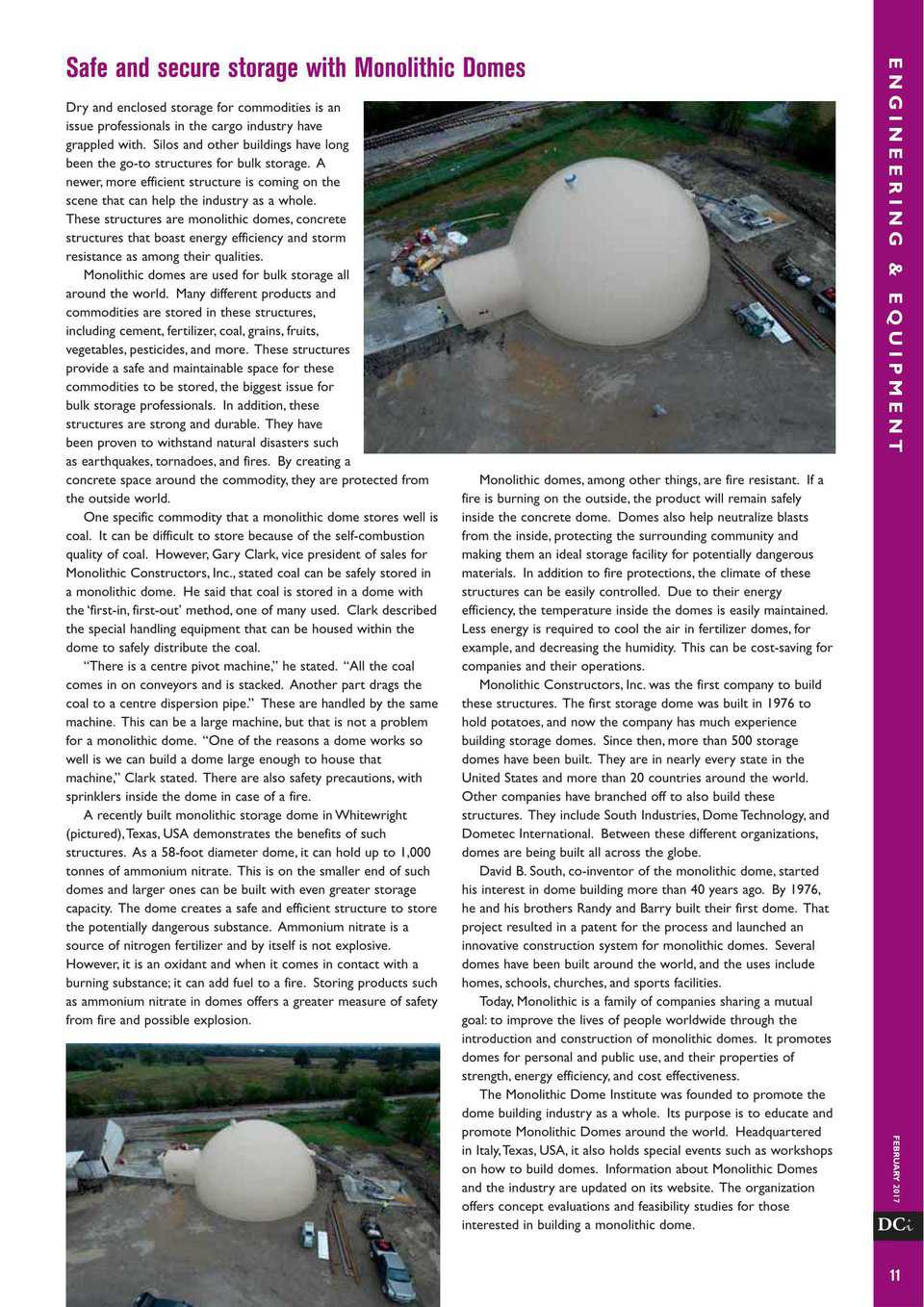For the second time in four months, storage domes are featured in an industry publication.
Dry Cargo International will feature storage domes, specifically coal and ammonium nitrate storage, in its February 2017 issue. The magazine last featured cement storage domes in its November 2016 issue.
Louise Dodds-Ely, editor of the magazine, stated why the magazine once again chose to feature the domes. “We selected Monolithic Domes to be featured because of the company’s extensive expertise in the covered storage of dry bulk commodities, and the interesting projects that we can feature in the magazine. We’re also impressed by the extensive technical expertise of Monolithic Domes, which will be of great interest to our readers.”
The magazine has a circulation of more than 6,500 readers in the industry. Additionally, its website receives more than 130,000 hits a month.
The article is titled “Safe and secure storage with Monolithic Domes.” It discusses the advantage of using a dome for storage capabilities.
Below are two quotes from the article.
“Monolithic domes are used for bulk storage all around the world. Many different products and commodities are stored in these structures, including cement, fertilizer, coal, grains, fruits, vegetables, pesticides, and more. These structures provide a safe and maintainable space for these commodities to be stored, the biggest issue for bulk storage professionals. In addition, these structures are strong and durable. They have been proven to withstand natural disasters such as earthquakes, tornadoes, and fires. By creating a concrete space around the commodity, they are protected from the outside world.”
“Monolithic domes, among other things, are fire resistant. If a fire is burning on the outside, the product will remain safely inside the concrete dome. Domes also help neutralize blasts from the inside, protecting the surrounding community and making them an ideal storage facility for potentially dangerous materials. In addition to fire protections, the climate of these structures can be easily controlled. Due to their energy efficiency, the temperature inside the domes is easily maintained. Less energy is required to cool the air in fertilizer domes, for example, and decreasing the humidity. This can be cost-saving for companies and their operations.”
Note: the magazine is published in England and uses British English.
For more information about the magazine, visits its website. You can also follow the publication on Twitter.

